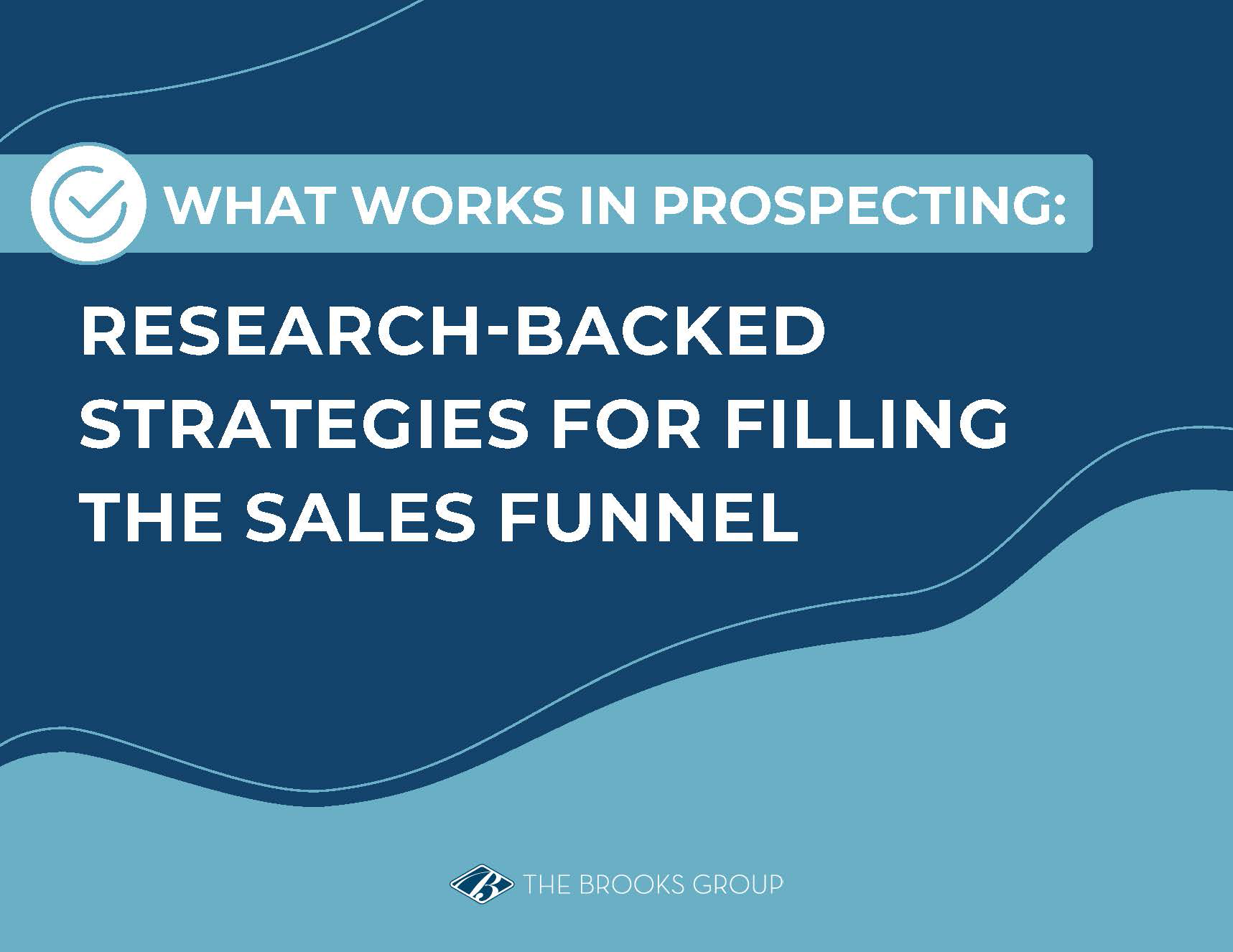77 out of 100 prospecting emails never get opened. Ouch.
Email prospecting is one of the most common ways to reach new customers. But almost a quarter of your messages aren’t read.
Email as a business tool has a long history. Over time, sales and marketing teams have learned multiple ways to increase the likelihood that a prospective client will open your email. The sender’s name, the subject line, the message, and the email preview are all factors.
Sales leaders, here are the benefits of using email, plus five tips to help your sales team improve their prospecting emails and increase open rates and engagement.
Benefits of Prospecting Emails
There are several reasons to encourage your sales team to use email prospecting. Prospecting emails can be an efficient way to reach a high volume of potential buyers quickly and easily. Email is also inexpensive compared to other marketing channels. Here are some other benefits of using email to reach new customers.
Automate Campaigns
Unlike inbound marketing and social media outreach, email prospecting is easy to scale. Drip campaigns and follow-ups can be automated. As your business grows, you can simply add more email addresses to your list. Email can also be integrated with CRM systems for better lead management.
Target Outreach
Email allows you to target specific individuals with a tailored message. You can segment a contact list by industry, company size, job title, or any other criteria to send the right message to the right people and improve response rates.
Measure and Optimize
Email prospecting is easy to measure and optimize. You can track your open rates, click-through rates, conversions, and unsubscribe rates to see what is working and what is not.
Communicate Asynchronously
We have all been on the receiving end of a sales call or direct message. Most of the time, we view them as interruptions. With email prospecting, prospects open and respond at their convenience so you’re not interrupting or simply hoping to catch them at a good time.
Personalize at Scale
Email prospecting allows you to personalize your messages at scale. The right tools will make it easy to insert personalized information like the recipient’s first name, company, or industry into your emails. This personalization can go a long way toward making your prospects feel valued.
5 Tips for a Better Prospect Email
Sending an intro email to a prospective client is a great way to attract a new customer. The goal is simply to introduce the recipient to your product or service to spark interest and start a conversation.
The email is the first step in establishing a back-and-forth with the prospect by:
- Arranging a phone call to discuss your product in more detail
- Asking them to come to a meeting or presentation
- Inviting them to join a webinar
- Directing them to an important blog post or case study on your website
- Offering an in-office visit or demo
Your prospecting email should be clear, concise, and to the point. It should also include a solid call to action that encourages the recipient to take the next step (set up a meeting, ask for more information, etc.).
It can be daunting to craft the perfect prospecting message from scratch. So, where do you start? How can you make sure your email stands out in a crowded inbox? Here are five important tips.
1. Research Your Prospect
The first step in any sales process is understanding your target audience. In the case of prospecting, it means taking the time to learn about the specific person or company you are emailing.
- Before you start typing out a message, ask yourself:
- What do you know about their company and their role?
- What are their main challenges?
- What are their goals?
- How can your product or service be useful to them?
- Do you share any connections with them?
You can find this information by reading their website, social media profiles, and any articles or press they have been featured in.
2. Use a Compelling Email Subject Line
It’s crucial to spend time crafting a subject line that is both interesting and relevant to the recipient. Believe it or not, 69% of email recipients mark messages as spam based on the subject line alone.
Your subject line should:
- Be short (no more than six or seven words). No one is going to click on a subject line that is too long or confusing.
- Include keywords. This helps your email stand out in a crowded inbox and lets the recipient know what the message is about briefly.
- Be personal. Addressing the recipient by name is always a good idea. If you have any mutual connections, mention them in the subject line as well.
- Ask a question. “Can we help you with XYZ?” and “Are you interested in XYZ?” are great examples.
- Make a statement. Be bold and to the point. For example, “You are invited: Join our upcoming webinar.”
The goal is to make your prospecting email stand out from the rest so it is more likely to be opened and read. See this list of sales email subject lines for more tips, advice, and examples.
3. Keep Your Email Short
An analysis of 40 million emails showed that emails containing between 50 and 125 words have the best response rates compared to longer or shorter messages—around 50% (versus 24%). Another study found emails with about 200 words have the highest clickthrough rates.
Why is this the case? Because we’re all busy people with short attention spans. No one wants to read a long email from a stranger, especially if you are emailing busy entrepreneurs, business owners, and professionals.
Get to the point quickly and explain how you can help the recipient solve their problem. If you must include additional information, consider adding it as an attachment.
4. Include Social Proof
Social proof is a powerful motivation for humans. We want to know other people have tried and liked a purchase we’re considering.
When emailing a prospect, one tactic is to include links to customer testimonials, case studies, or positive reviews. You can also mention any well-known brands you have worked with in the past.
Try not to be overly salesy or self-promotional. If including social proof, focus on how you have helped other customers solve their problems.
5. Send Your Email at a Good Time
There is no perfect time to send your email. The best thing to do is experiment to understand what works for you. Here are some general guidelines.
Weekday mornings are best for getting attention. People are fresh and have not been bombarded with emails yet.
Depending on your prospect, late-night emails can be effective because the recipient will see it first thing in the morning.
But avoid Monday mornings. Everyone’s inbox is overflowing after the weekend.
Fridays are usually a bad day to email people because they are already thinking about the weekend and may not pay as much attention to your message.
If you are emailing someone in a different time zone, take that into account. You do not want to email them at 3:00 AM.
Test different days and times and see what works best for your audience. Once you find a time that works, stick to it as much as possible. Consistency is key.
Help Your Team Leverage the Value of Email Prospecting
Email prospecting can be a great way to connect with potential customers and grow your business. Not only are emails a more personalized and direct method of outreach, but they are also easy to measure and optimize.
To help your team get the most value from their email prospecting campaigns, encourage them to test different approaches, subject lines, and offers to find what works best for your business.
Find out how to improve sales team prospecting with The Brooks Group IMPACT Selling® training program.
White Paper Download
What Works in Prospecting
There are many variables that impact the success or failure of a sale. Do your sellers risk the sale by making assumptions about the buyer?
Gain insight into the survey results from over 300 buyers and sellers, from individual contributors to CEOs, that will help your sales team improve their prospecting effectiveness.





